
Beirut Intersections #3. Report on the Lebanese capital’s arts scene
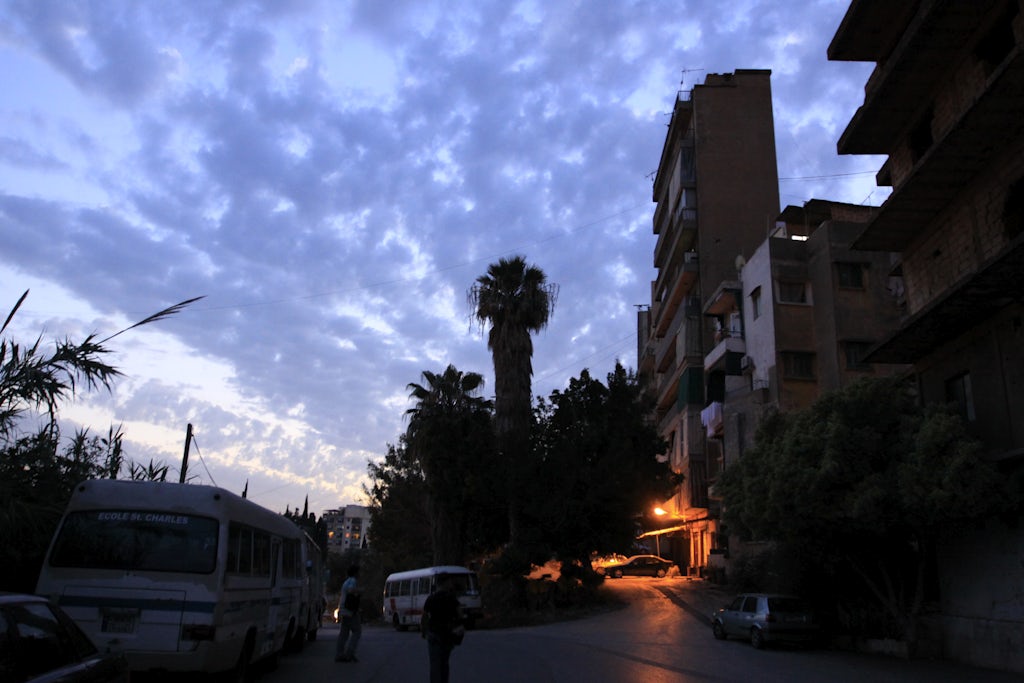
The Sky over Beirut (c) Tony Chakar
‘Freedom of Expression’ was the chosen theme of the IETM Satellite Meeting that took place in Beirut from 6 until 9 October. The scope of this theme was tested and explored during this dense networking event by means of talks that brought together about five speakers on a specific subject with the aim of mapping out, with a moderator, the problems in the sector of the performative arts. I cannot rid myself of an us/them feeling, but that would deserve an analysis in itself, which I wish to skip for now in this text. Censorship, decolonisation of the arts, networking: important topics are raised and I wonder whether the Lebanese contemporary visual arts face similar questions and problems. Here and there we try to arrange other meetings, precisely to get to know that sector. This ‘complementary programme’ offers us the opportunity to travel across the city of Beirut and to go in search of places where contemporary visual art can thrive and develop.
Dit artikel is enkel beschikbaar in het Engels.
One of the places we visit is the Sursock Museum. We meet director Zeina Arida and curator Nora Razian. The museum is housed in a luxurious villa that was converted a few years ago and expanded with a hyper-modern museum wing, library and restaurant/shop. Sursock was clearly intended as a showpiece for Beirut in the field of visual arts. We also visit the exhibition Let’s Talk About the Weather: Art and Ecology in a Time of Crisis. The public programme that gets developed in Sursock around an exhibition is impressive (1). One of the activities organised in the context of Let’s Talk About the Weather is a performance by Tony Chakar. This Lebanese artist invites his public on a day trip to the Chouf district in the Lebanese mountains. We book a seat on the bus.
Censorship, decolonisation of the arts, networking: important topics are raised and I wonder whether the Lebanese contemporary visual arts face similar questions and problems.


Tony Chakar (b. 1968 in Beirut, Lebanon) is generally introduced as a Lebanese architect, writer and storyteller. He likes to use the format of the lecture-performance. It is a way of broaching sensitive subjects without violating the mutual understanding between artist and audience. Chakar often seizes upon the allegory, the veiled or hidden narrative and ambiguity as a very effective way of voicing criticism (2). The artist has already given lecture-performances in which he shows pictures in silence of the remains of the Lebanese past, the consequences of the civil war that gripped the country from 1975 to 1990, the conflicts with Israel and the revolutions that have ravaged the Arab world since 2010. In January 2012 Chakar gave a similar lecture-performance in Haus der Kulturen der Welt in Berlin: “When the revolutions in the Arab world started, and the press introduced the term ‘The Arab Spring,’ many artists from the region, including myself, were often solicited by European cultural institutions to speak about what was going on. This, in itself, seemed harmless: ‘they’ wanted to know and ‘we’ wanted to speak. At least, this is how it looked at first. Now the debate has shifted and the interest has waned. The themes today revolve around radical Islam, the fears of minorities, chemical weapons and so on – things on which contemporary artists are not considered experts. During this Berlin lecture-performance I showed a short video and a PowerPoint presentation, remaining silent throughout. I had asked that I be paid in cash at the end of my presentation, on stage. When I finished, the director came to me with an envelope. I opened it, counted the money and put it in my wallet.” (3)
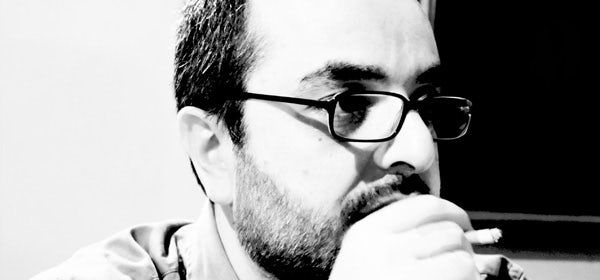
Below there follows a report of a day excursion with Tony Chakar through the Chouf mountains, a day full of visual impressions. We were accompanied on our tour by fragments of information. In one way or another I realised that there was nothing to be done besides carefully following and ‘participating’ in order to arrive at a proper understanding of what the performance could mean. For me, participating meant trying to ‘understand’, to store information and to lay nodes in Chakar’s broken storyline. Was this trip in the Chouf mountains a performance, an artistic intervention? When writing this text I automatically had to think back to another art project that I had organised in Ostend with Nico Dockx. This Belgian artist had invited some 15 people to take part in an Ayurvedic cookery workshop with Egon Hanfstingl. We spent a whole day in the kitchen of an Ostend restaurant and we prepared and ate a number of dishes together. Nico Dockx did not intervene as the initiator and deviser. As an artist, he added nothing, but left the platform open for the participants. Whoever wanted to spend a day feasting on good food with a free glass of wine could do so. Whoever wanted to get actively involved in the wondrous world of Hanfstingl and Ayurvedic cooking was more than welcome. The more curious and active we were, the more meaningful the project seemed to become. The artistic substance came to expression strangely in the frankness of the supplier. Take it or leave it.
In one way or another I realised that there was nothing to be done besides carefully following and ‘participating’ in order to arrive at a proper understanding of what the performance could mean.
In search of the performance
Sunday morning, 10 am sharp. Meeting at the Sursock Museum. The tour – so says the website of the Sursock – “takes in the ancient and recent history/ies of this region that were instrumental in the formation of modern Lebanon. The full day itinerary is: Beirut – Deir el Qamar – Beiteddine – Maasser el Chouf – the Cedar Reserve – the Beqaa Valley – Chtaura – Beirut.”
We set off with a bus full of expectations. The twenty participants that enrolled for this tour are, to put it mildly, culture-lovers. They include an Iranian cither player, a French artist from Berlin, a philosopher from Beirut, a Hegel expert from Slovenia, a French curator and her assistant from the Beirut Art Center and two Dutch tourists travelling through Lebanon.
For a moment it seems as though Tony Chakar wants to take us – by analogy with earlier ‘silent’ performances – on a ‘silent’ trip through the Chouf mountains. Image without sound. “I’m not a tourist guide”, is the first thing he tells us. But nevertheless he gets going and takes us back in time, to the Chouf mountains in times of war. He briefly sketches how the conflicts of those days are a direct reflection of the current conflicts in Lebanon (4). The Lebanese Civil War broke out in 1975. When the country gained independence in 1943, a relatively stable republic was delineated in which Christians, Sunni and Shiites ruled together, and power relations were in accordance with the population numbers. This balance of power came under intense pressure as a result of the gradual inflow of Palestinian refugees which crossed the border with Lebanon because of the Israeli-Palestinian conflict. The Lebanese Civil War arose as a complex tangle of alternating contradictory forces. Tony Chakar zooms in on the conflict that developed in 1982–1983 in the Chouf district, the region where he has his roots, it seems. The mountainous region is mainly populated by Druze and Christians. Each others’ neighbours in harmony, despite some historical clashes between both population groups.
We set off with a bus full of expectations. The twenty participants that enrolled for this tour are, to put it mildly, culture-lovers. They include an Iranian cither player, a French artist from Berlin, a philosopher from Beirut, a Hegel expert from Slovenia, a French curator and her assistant from the Beirut Art Center and two Dutch tourists travelling through Lebanon.
The year 1983 is engraved in memory as a dark year, but today it is no longer spoken of. That is at least what the artist emphatically claims. It is a sentence that we will hear more than once during the day. Each time it hits us like a ton of bricks and imposes silence on us. What happened there precisely? It started in June 1982, when Israel officially got involved in the war by invading Lebanon, with the objective of fighting and ousting the PLO (Palestine Liberation Organization). When giving a name to the attack, the history books waver between ‘Lebanese-Israeli War’ and ‘Operation Peace for Galilee’. A year later, in 1983, Israel decided to withdraw from the Chouf mountains. A consequence of this sudden and unannounced withdrawal was that the Druze militias – supported by Syrian troops and the PLO – immediately turned on Christian militias and the Christian population in the Chouf district. Israel had armed both sides, but now simply stood by and watched from a distance.
This is where his story stops, for now at least. In the meantime we have left Beirut behind us and, heading south of the city, the bus, after a first border control, leads us into the mountains. Lebanon is not an industrialised country and agriculture is concentrated on the cultivation of fruit: bananas, oranges, apples, peaches, and back in the day also blackberries. Blackberry or mulberry trees were cultivated not so much for their fruit as because this seems to have been the favourite nourishment of the silkworm. Lebanon was an important producer of silk in the nineteenth century. The mulberry trees still stand out today.
We make a first stop in Deir el Qamar. It is Sunday morning. The local Maronite church is packed. According to an old legend, at the time people went in search of remains of an older temple or house of prayer. If they found remains of a mosque, a new mosque would arise. If they found Christian remains, it would again become a Christian place. A stone topped by a cross, the moon and Venus is still incorporated into the portal of the Maronite church. As an accomplished guide, Chakar leads us through the city’s narrow alleyways and streets. Although he initially distanced himself from this role, it nevertheless appears to be an important part of his ‘performance’. He does not overload us with all kinds of details, but only seems to tell us what personally fascinates him, irritates him or touches him emotionally.

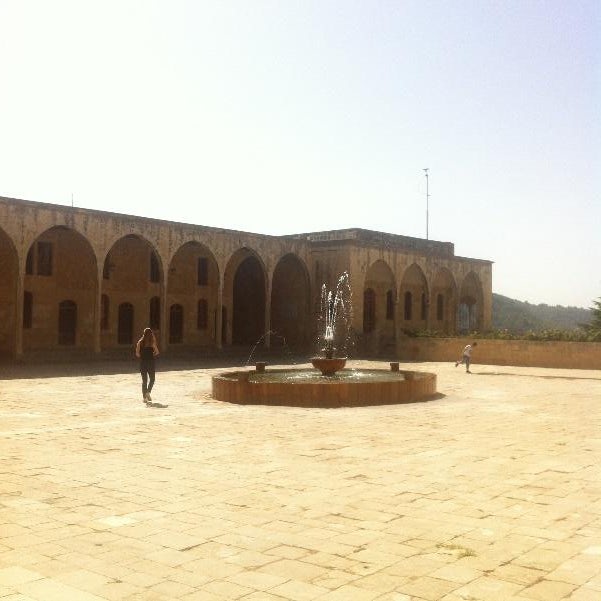
The next stop is Beiteddine, the capital of the Chouf district. The presidential summer residence is here. This nineteenth-century palace is currently open to the public, given that Lebanon has been without a president since May 2014. The country is in a complete political deadlock. Chakar does not waste many words on it. He laconically offers one of us the job. We are surrounded by elegant woodwork and sculptures. What was once a local craft speciality – at least as regards the stonecutting, since the woodcutters came from Damascus – now seems like past glory that is hardly being handed down to new generations. Tony Chakar shares this with us, but it still seems as though this is a requisite little speech that hardly fascinates him. Somewhat later, more emphasis is put on his argument, when he steers us down to the basement of the palace. The latter gives out onto a rose garden with a view onto the mountains, and is home to a large collection of mosaics. One Walid Jumblatt, a notable ruler and leader of the Druze in the Chouf mountains, removed many mosaics from their original context and brought them to safety, away from the violence of war in the 1970s and 1980s. The mosaics look strange, alienated and separated from their original contexts – churches, houses and other places spread across Lebanon. “How can one man decide upon this and steal those pieces out of their context?”
Who is Walid Jumblatt? The man seems to have played a crucial role as leader of the Druze militias in the Chouf mountains during the Lebanese-Israeli war. Today too he is a key figure in Lebanese politics, where he is ubiquitous. The Chouf mountains constitute his home. The Jumblatt clan has been an important player in the Druze area for centuries. Tony Chakar shows us where the man lives. His palace lies in Moukthara and is flanked by a modern mosque. We drive by slowly and realise that this man is very good at managing and controlling the power game.
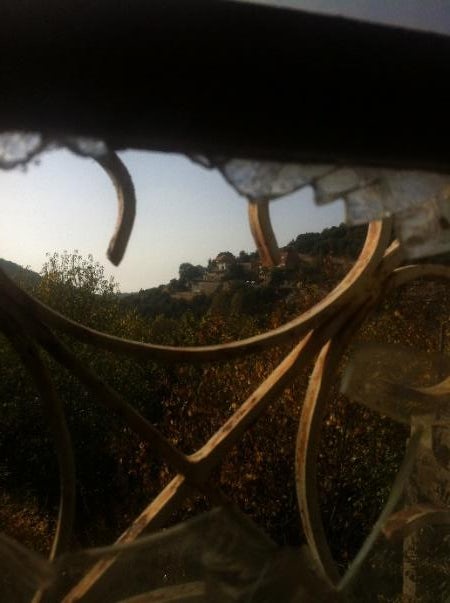
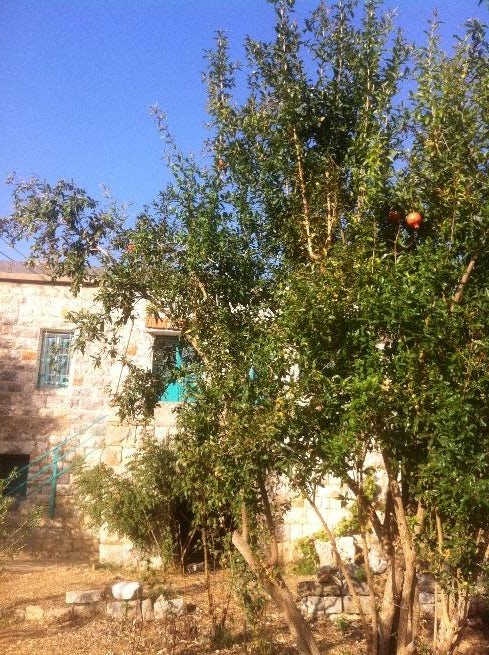
We have lunch at Nabeh Murshed’s in the centre of Moukthara, clearly the place to be for families and friends seeking to enjoy a long Sunday lunch. While we eat we are accompanied by some live music and the gentle murmur of an idyllic waterfall. After lunch, Tony Chakar takes us to Maaser el Chouf, a village high in the mountains. This is where his roots are. His family lived here and he has a house here, or at least in part, he almost owns it, it’s not quite clear to us. We stop in the centre of the village. Chakar explains to us that he wants to tell us is quite sensitive. We feel a powerful personal involvement surface when he picks up his story again and delves deeper in the Lebanese-Israeli conflict in 1983. He speaks haltingly and entices us to a dilapidated and abandoned house, once inhabited by a family of Christians. A cardboard sign hangs on the outside wall: ‘Expo’. What Tony Chakar wants to tell us here precisely is not quite clear to us. He insinuates, seems to want to inform us about a collective trauma without having to talk about it. Because no one speaks anymore, remember?
We walk in the direction of the cemetery, away from the village, but stop halfway. We are not going to visit it. His father is buried there. It catapults us back in time.
Tony Chakar does not wish to go any further. There must be silence.
When the Israeli army withdrew unannounced in late August 1983 from the Chouf district, Druze militias, incited by Walid Jumblatt, moved from village to village to drive out and kill the Christians. Whoever tried to flee across the ridge in the direction of the Beqaa Valley was driven back and murdered.
Today everything is just peachy, and a slaughter of Christians has never taken place. We walk past inhabited and well-cared-for houses, flanked by abandoned and dilapidated houses of Christians. Maaser el Chouf is seeking reparation. Jumblatt wishes to welcome the Christians back in their homes and in this way restore economic balance to the region. “We must look to the future and forget the past”. Talk about ‘freedom of expression’, or when peace is essentially guided by questions of economic balance.
We pass two local shops but are kindly urged to enter one of them, not the other. Is this silent evidence of the division that still reigns here? We walk on to a house a bit further on. The house once belonged to Tony Chakar’s family, until his father, uncle and aunt were driven out and murdered. His cousin later took revenge and killed twelve Druze. Today he can no longer return to his region, his village. Tony’s aunt used to bake breads in the outdoor oven in front of the house. There are fruit trees in the garden. A poem by Lebanese poet Michel Trad is thrust into our hands and we are asked to read it in silence. Tony Chakar does not wish to go any further. There must be silence.
A few kilometres higher up in the mountains there is the Cedar Nature Reserve. It is an extensive wildlife area of about 50,000 hectares. The cedar is the national symbol of Lebanon.
A knotty specimen adorns the Lebanese flag. A number of cedars in Lebanon are still disputing the honour of having served for the design of that flag. Opinions are divided but a number of cedars have already reached the venerable age of 3,000 years. These trees outclass our own modest human history and have been silent witnesses for all this time of the events in this landscape. Tony Chakar refers more than once to the Bible when he leads us through the nature reserve. “What’s in the Bible must be true, right?”
In a final footnote, Chakar compares the humility in the face of the age-old trees beside the bloodbath of 1983 in Maasser el Chouf and he again delicately emphasises Israel’s dubious role in this event. When it seems that he has finished speaking, he simply adds: “Please, remember this.”
Evening falls, the mist rises and we cross the ridge into the Beqaa Valley. What follows seems like a touristy annex to the trip that Tony Chakar has served us so far. A selfie moment with a view on the Beqaa Valley and Lake Qaraoun in the distance, and a short visit to Chateau Kefraya, where we can taste the local wine. On the way back to Beirut, it is remarkably quiet in the bus.
Notes and sources
- Razian’s background may play an important role in this since before she arrived at Sursock, she was Curator of Public Programme at Tate Britain and Tate Modern, United Kingdom.
- Kaelen Wilson-Goldie, ‘Neverending story’; in: Artforum, 4/7/2015
- Source
- I am doing my best here to capture the essence of Tony Chakar’s words, well aware that this does not do justice to the complexity of Lebanese history. As far as possible, I have tried to read up on this complex lesson of war, in order to be able to transcribe Chakar’s story fairly. Sometimes I have had to cut corners, but that was also how the artist wanted to share the story with us.
Dima de Clerck, Le « retour des morts ». La « place » des morts de guerre chez les chrétiens du Sud du Mont-Liban, Autour des Morts de Guerre. Maghreb – Moyen-Orient, Publications de la Sorbonne, Paris, 2013.
Robert Fisk, Five hours of hate town can’t forget, The Independent, 29/10/1995.
Creative Time Reports
Kaelen Wilson-Goldie, Neverending story, Artforum, 4/7/2015





